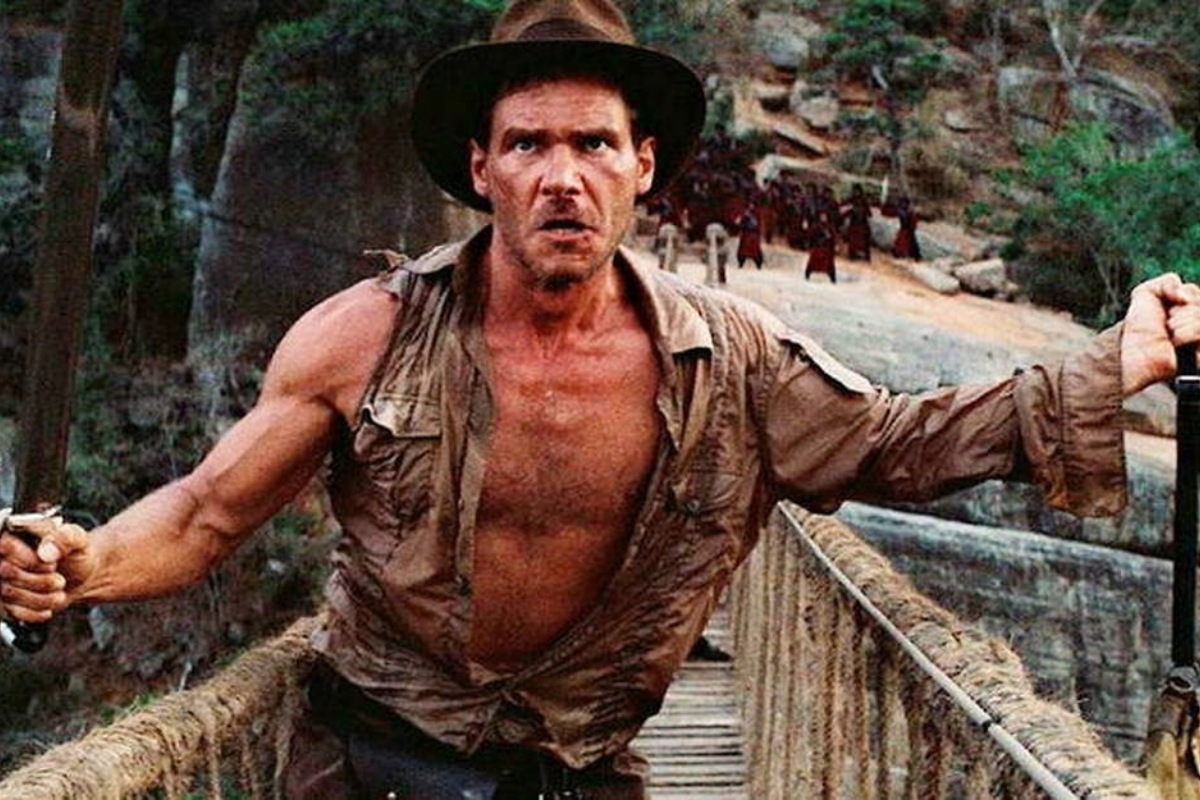The wildest Indy chase never left the boardroom. What vision spooked the suits enough to sideline George Lucas at the height of his blockbuster powers?
Before dinosaurs roared in multiplexes, George Lucas pitched an Indiana Jones sequel that leapt from the Great Wall to a hidden valley of thunder-lizards. The adventure never left the drawing board, stalled by early 1980s politics in China and a studio calculus wary of what audiences and technology could handle. What followed, from Empire of the Sun’s cautious breakthrough to later Indy controversies, shows how gatekeepers and geopolitics can reroute even the boldest pulp dreams.
A lost Indiana Jones adventure, 43 years in the making
In 1980, as moviegoers buzzed with excitement following the success of Raiders of the Lost Ark, George Lucas was already envisioning Indiana Jones’s next big escapade. What he proposed for the sequel went far beyond anything fans could have imagined. The legendary filmmaker planned an epic adventure set in China, complete with a chase atop the Great Wall and dinosaurs. Yet, this bold concept never saw the light of day, owing to firm resistance from studio executives.
Dinosaurs, the Great Wall, and a hidden valley
George Lucas’s original idea was nothing short of ambitious. Picture Indiana Jones, played by Harrison Ford, racing after a villain across the iconic Great Wall. From there, this adventure would lead him to a hidden valley deep within China, where dinosaurs roamed freely. The concept was fantastical, some might even say ahead of its time, and fit Lucas’s penchant for pushing creative boundaries. He envisioned a lost world scenario, blending history, mythology, and paleontology into one daring tale.
However, the grand scale of Lucas’s vision quickly ran into logistical and political challenges. At the time, China was wary of allowing Western film productions on its soil, despite the potential Hollywood spotlight. This hesitation ultimately forced the hand of Paramount Pictures and other stakeholders, who decided Lucas’s plans were simply too complex, not just politically but culturally. The studio vetoed the project, leaving Lucas to rework his ideas into what would eventually become Indiana Jones and the Temple of Doom.
China’s political crossroads and Hollywood limitations
The early 1980s marked a transitional period for China. The nation was beginning to cautiously open its doors to Western media and commerce but remained finicky about control and representation. Discussions about filming on the Great Wall would have required navigating layers of bureaucracy and political risk at a time when China’s openness to cultural exchange remained limited. Ironically, years later, Steven Spielberg’s Empire of the Sun (1987) became one of the first Western films partially shot on location in the country, signaling a slow shift in policy.
Lucas’s vision also clashed with Hollywood realities. Back in the early 80s, creating realistic dinosaurs on screen would have been nearly impossible without the technological leaps seen in later hits like Jurassic Park. Instead, Lucas pivoted away from dinosaurs and developed a darker, more compact narrative influenced by mythology and global history, though some fans still wonder what could have been in place of Indiana Jones and the Temple of Doom.
Would dinosaurs have worked for Indy?
Looking back, it’s fascinating to wonder whether audiences could have embraced an Indiana Jones tale set in a lost world populated by dinosaurs. Lucas’s willingness to dabble with the fantastical wasn’t unlike his friend and collaborator Steven Spielberg’s own experiments with blending genres. And yet, the reception of Indiana Jones and the Kingdom of the Crystal Skull decades later, with its extraterrestrial elements, suggests fans of the franchise have limits when it comes to suspension of disbelief.
Still, Lucas’s dinosaur idea might have fared differently had it been executed more recently, with modern CGI to back it up and a global audience more welcoming of bold mashups. After all, Hollywood’s fascination with prehistoric creatures has long existed, from The Lost Continent to Jurassic Park. Perhaps Indiana Jones and his whip could have become an unexpected addition to that legacy.
A glimpse at what never was
Ultimately, George Lucas’s original plans for Indiana Jones’s second adventure stand as a fascinating what if in cinematic history. Scrapped not just by studios but also by geopolitics and the limits of film technology at the time, the idea found itself buried like a relic, never truly forgotten. Had circumstances aligned, the result might have been extraordinary. Sometimes, even in the best of adventures, the greatest stories are the ones untold.

